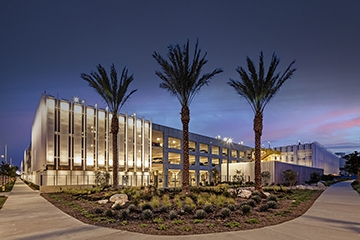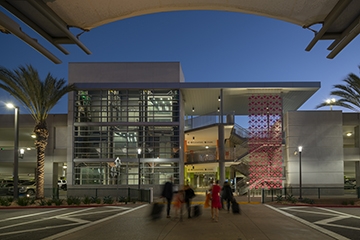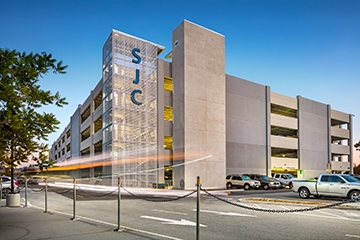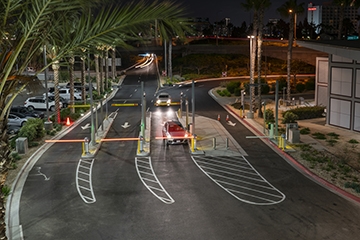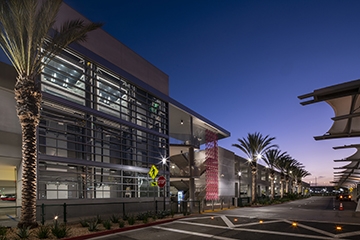Original Source: "Parking Today: The Passenger Experience Begins Before Entering the Airport" by Michael Pendergrass & John Purinton for Parking Today
The US airline industry set a record in 2019 when over 900 million people chose to travel by plane. While air travel in 2020 will reflect a different story due to the global pandemic, it will likely remain a vital way to travel in the future. However, before we can take to the sky to get to our destination, we have to take an important first step: getting to the airport.
The journey from front door to buckling your seatbelt on board your flight can generate a great deal of stress. Families traveling for leisure are often tasked with managing luggage, keeping track of family members and navigating potentially unfamiliar surroundings. Business travelers are often dependent on schedules and navigating deadlines. Regardless, every traveler faces potentially stressful time constraints, and mitigating them doesn’t start inside the terminal – it starts with the arrival experience.
For those whose arrival experience starts with parking, many airports are seizing the opportunity to offer passengers a high quality experience that starts before they even exit their car. From site location to functional design to cutting edge technology and public art, today's airports are creating parking that focuses on far more than square footage and stall count: it's an extension of the passenger experience.
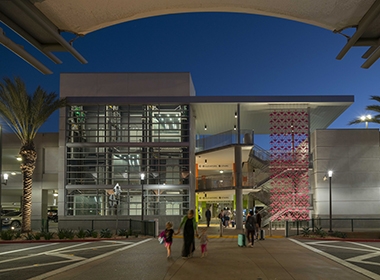 San Diego International Airport Terminal 2 Parking Plaza
San Diego International Airport Terminal 2 Parking Plaza
High Level Technology
When the Terminal 2 Parking Plaza opened at San Diego International Airport, it reflected how much consideration was given to the passenger experience. The cutting edge parking technology incorporated into the plaza allows passengers to reserve parking in advance via mobile app, guaranteeing them a space when they arrive. The user-friendly interface was carefully designed to be simple and flexible. The system is capable of accepting discount codes and coupons, and frequent fliers can benefit from a loyalty program.
Upon arrival to the Plaza, travelers who have prepaid for parking only need to scan a QR code to gain entry, though in the future the system will match a license plate to a prepaid reservation and open automatically. The system is also designed for future integration with California’s FastTrack toll system, which will allow users to pay via their FastTrack accounts. This flexibility makes for a smoother, faster entry and exit, which reduces stress and helps passengers get where they need to go as quickly and efficiently as possible.
Once users gain access to the parking plaza, parking guidance technology helps them quickly locate an available space. Camera-based sensors detect whether or not a vehicle is occupying a parking stall and convey the information in real time to displays located at every point throughout the structures where drivers need to determine whether to turn left, right or continue straight ahead. This makes the parking experience quicker and more efficient, helping travelers easily get to where they need to go.
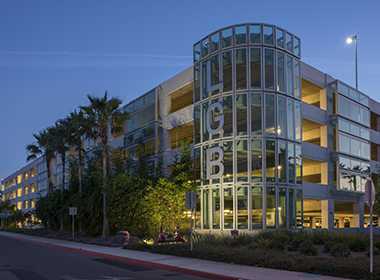 Long Beach Airport
Long Beach Airport
Functional Design
Conveniently located parking can dramatically improve the passenger experience. Before construction of the ConRAC and Parking Structure, travelers coming and going from the San Jose Mineta International Airport were forced to take a shuttle from the terminal to an off-site rental car facility, particularly inconvenient for business travelers. To create a passenger-first experience at Silicon Valley’s airport, public parking and rental car facilities were located directly in front of the new Terminal B.
Relocating the facility reduced average travel time from gate to vehicle by a whopping 20 minutes. The design of the customer service building creates even more convenience by allowing rental car users with premium contracts to bypass the line and go straight to their vehicles. The move also reduced traffic congestion on airport roadways by over 25%.
Long Beach Airport also emphasized conveniently located parking during a major modernization effort that included a new parking structure within walking distance of the terminal. The design emphasized convenience, including reconfigured vehicular circulation that allows drivers to bypass the lower parking levels during peak times.
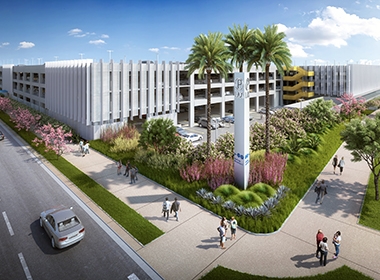 LAX Intermodal Transportation Facility (ITF)-West
LAX Intermodal Transportation Facility (ITF)-West
Mobility Hub
Los Angeles International Airport (LAX) is utilizing a similar mindset to relieve traffic and congestion at the world's third busiest airport. The extensive Landside Access Modernization Program (LAMP) will not only provide a more predictable and reliable commute to the airport, but also offer a world class guest experience. This program includes the Intermodal Transportation Facility (ITF)-West, which will provide travelers with convenient access to LAX without needing to enter the Central Terminal Area. By connecting to the new Automated People Mover (APM) train system with two pedestrian bridges, the ITF-West facility will create a mobility hub where passengers, friends and family can be dropped off and picked up or can park and ride the APM directly to the terminals.
LAX is not the only airport incorporating mobility to improve the passenger experience. A new, one million square foot multimodal complex at Pittsburgh International Airport aims to create a faster, more efficient and user friendly journey. The mobility hub will provide public parking, rental car space, a ground transportation center, transit connections and a curbside pick-up and drop-off for ridesharing services. Passengers will have easy access to a newly modernized terminal via a covered pedestrian bridge that will protect them from the elements.
Humanized experience
In addition to creating a quicker, more efficient parking experience, airports can relieve passenger stress by emphasizing the human experience. The San Diego International Airport took this step with the Terminal 2 Parking Plaza.
An overlook on the top level provides amazing harbor and downtown views. Three massive public art features at each stairwell were designed to not only welcome travelers, but also to celebrate San Diego and its heritage. Each installation consists of stainless steel aircraft cables strung with hundreds of resin airplanes. Each screen features a different style plane to celebrate San Diego’s commitment to the aviation industry.
To connect even deeper to the Airport’s origins as Lindbergh Field, one plane is a model of San Diego’s own Spirit of St. Louis. Each installation and the stairwells of each level feature a unique color to act as a wayfinding element for passengers.
Amenities are another way airports can enhance the passenger experience. The ITF-West facility will incorporate a Meet and Greet space, valet parking, public restrooms, enhanced pedestrian walkways and space for concessions.
Sustainability to enhance the built environment
Sustainable parking design can also enrich the user experience, as many sustainable design choices can lead to aesthetically pleasing design opportunities. This was the case for the San Diego Terminal 2 Parking Plaza, which was certified Parksmart Gold for its sustainable achievements. As the airport sits on a harbor, the building’s height was reduced to preserve the impressive harbor views. The resulting expanded footprint created challenges to bringing in enough natural light and ventilation, so the design team opted for a moment frame structural system and incorporated three expansive lightwells to provide as much natural light as possible.
In keeping with the Airport’s goal to provide a premier experience for travelers, the lightwells were then integrated into the design as pedestrian pathways adorned with public art and aesthetic touches such as rock gardens and seating. The result is a sustainable design element that also serves as a relaxing gateway, escorting travelers from the parking structure to the terminal.
By designing parking that is faster, more efficient and relaxing, airports can reduce some of the inherent stress of traveling and set the tone for the passenger experience before guests even enter the terminal.

